#Northern Tanzania
Explore tagged Tumblr posts
Text

#Ngorongoro Crater#mossy#mossy tees#moss on trees#green#verdant#aesthetic#nature#naturecore#pale#fog#fogcore#mist#mistcore#Tanzania#africa#southeast africa#northern tanzania
12 notes
·
View notes
Text
Northern Tanzania Package
#OnceUponALifeInNorthernTanzania #NorthernTanzaniaPackage Visit Northern Tanzania, the #LandOfSuperlatives, from #AfricaHighestMountain to one of the #GreatestWildlife spectacles on the planet!!4 Nights / 5 DaysStarting From USD 2100* Per PersonThe ItineraryDay 1 : #ManyaraDay 2 : #SerengetiDay 3 : SerengetiDay 4 : #Karatu / #NgonrogoroDay 5 : DepartureAccommodation :Manyara :…

View On WordPress
#adler#Adler Tours#Adler Tours and Safaris#Adler Tours Safaris#Africa#Africa Highest Mountain#Attraction#Bougainvillea Safari Lodge#CAR HIRE#Car Hire In Rajkot#CAR ON RENT#Car On Rent In Rajkot#family Holidays#Family Tour#Greatest Wildlife#Gujarat#Karatu#Kirurumu Manyara Lodge#Land Of Superlatives#Manyara#Ngonrogoro#Northern Tanzania#Northern Tanzania Package#Once Upon A Life In Northern Tanzania#Photography#Rajkot#Safari#Safari Package#serengeti#Serengeti Kati Kati
0 notes
Text
16 Days Across Northern Circuits Safaris
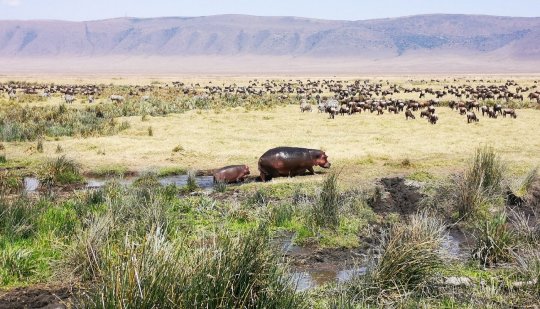
The 16 Days Across Northern Circuits Safaris tour will take you to the most attractive and most sold destinations in the northern circuits in Tanzania, The Intends to offer you a full package of what we mean Tanzania Is the Best Destination in Africa. Combination wildlife tour, Walking safari, Village visit gives very unforgettable days to experience not only those but also the tour will extend to Natron, Serengeti, Tarangire, Ngorongoro Crater, Lake Manyara National Park encountering the sound of Tanzania at large, The world wildlife movement show-Great Wildebeest Migration and the Big five Will be part of your true Holiday memory.
Experience the adventure of meeting the "Big Five"—lion, leopard, elephant, buffalo, and rhinoceros—while discovering a world of diverse wildlife. This carefully curated tour blends adventure, nature, and cultural immersion, confirming lasting memories and showcasing the delightful beauty and diversity of Tanzania.
Want to Know more about, click on the link https://sumbiextramilessafari.com/16-days-across-northern-circuits-safaris
0 notes
Text
5 Days Safari in Tanzania: A Luxury Adventure
Embark on a 5-day safari in Tanzania for an unforgettable experience through some of the most iconic landscapes and ecosystems in East Africa. This journey will take you across the stunning plains of Serengeti National Park, the remarkable Ngorongoro Crater, and the picturesque settings of Tarangire and Lake Manyara National Parks. Each day promises thrilling game drives, breathtaking scenery, and encounters with diverse wildlife.
#Luxury Safaris in Tanzania#tanzania safaris#Serengeti National Park Safari#Tanzania Northern Circuit Safaris#tanzania southern circuit safaris
0 notes
Text
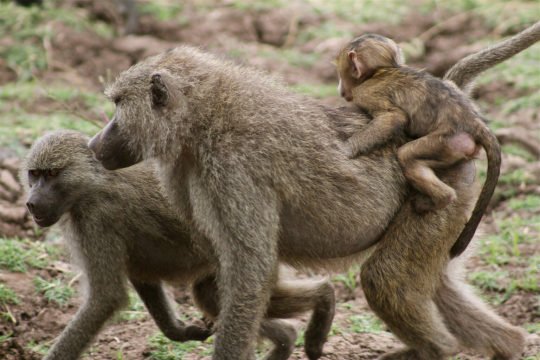
Northern Circuits Safari
Discover the diverse wonders of Tanzania's Northern Circuit on a captivating safari that takes you through a tapestry of landscapes and experiences. From the iconic plains of the Serengeti to the majestic heights of Kilimanjaro and the hidden gems of Lake Manyara and Tarangire, immerse yourself in the rich tapestry of East Africa's natural beauty.
#family safari#safari tanzania#tanzania safari#tour package#Northern Circuits Safari#tailor-made safari tanzania#travel#tanzania wildlife safari#best of tanzania safari#tanzania family safari#photographic safari tanzania
0 notes
Text
Exploring The Wonders - A 5-Day Northern Tanzania Safari

Exploring on a 5-Day Northern Tanzania Safari promises an immersive journey through some of the most iconic and diverse landscapes the region has to offer. Here's a snapshot of what your adventure might look like:
Day 1: Arusha National Park
Kickstart your safari with the hidden gem of Arusha National Park. Encounter diverse wildlife, from giraffes to the rare black-and-white colobus monkeys. Marvel at the vibrant hues of the Momella Lakes and explore the picturesque landscapes of this unique park.
Day 2-3: Serengeti National Park
Head to the world-renowned Serengeti National Park, where the Great Wildebeest Migration unfolds. Witness the breathtaking spectacle of wildebeests, zebras, and predators in action. Enjoy game drives across the vast plains and savour the mesmerising sunset over the Serengeti.
Day 4: Ngorongoro Crater
Descend into the Ngorongoro Crater, a UNESCO World Heritage Site and a haven for diverse wildlife. Encounter the Big Five within the confines of this ancient volcanic crater. The stunning scenery and high concentration of wildlife make it a day to remember.
Day 5: Tarangire National Park
Conclude your safari with a visit to Tarangire National Park. Famous for its massive elephant herds and iconic baobab trees, Tarangire offers a unique and picturesque setting. Capture memorable moments during game drives before bidding farewell to the wonders of Northern Tanzania. A 5-Day Northern Tanzania safari offers an unforgettable journey through Africa's most iconic national parks and wildlife-rich landscapes. Join With Rena Tours and Prepare for a journey that goes beyond expectations and leaves you with memories to last a lifetime.
0 notes
Text
Capturing the Spectacle: Tanzania's Wildebeest Migration Photographic Safari
Embark on an extraordinary adventure through the heart of East Africa with a Tanzania Wildebeest Migration Photographic Safari. This immersive experience allows photography enthusiasts to witness one of nature's most spectacular events—the Great Migration—while capturing breathtaking moments on camera.
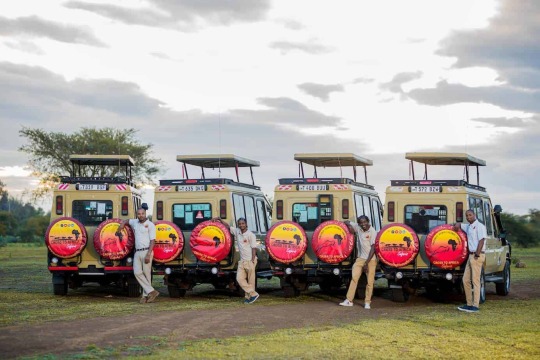
The Serengeti, a vast expanse of grasslands and savannahs in Northern Tanzania, serves as the stage for this awe-inspiring phenomenon. Millions of wildebeest, zebras, and other wildlife traverse the Serengeti in search of fresh grazing lands, creating an unparalleled spectacle. A Wildebeest Migration Photographic Safari offers a front-row seat to this natural drama, allowing photographers to freeze-frame the intensity of the migration and the predator-prey interactions that unfold.
For those seeking an adventure that combines the thrill of the migration with the charm of a budget-friendly experience, the Northern Tanzania Budget Camping Safari is an ideal choice. This safari option provides an authentic and immersive journey into the wilderness without compromising on the richness of the experience. Traverse the Serengeti's landscapes, camp under the star-lit African sky, and wake up to the sounds of the wild—all within the constraints of a reasonable budget.
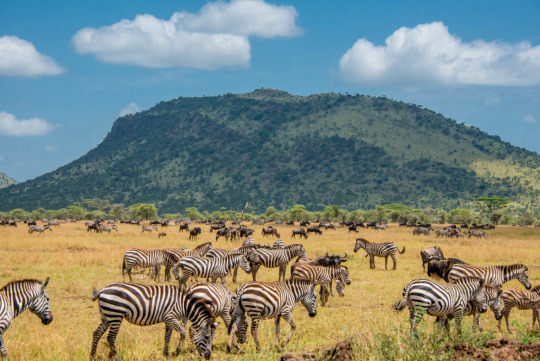
The Serengeti Tanzania Photographic Safari takes the experience a step further, catering specifically to photography enthusiasts. Accompanied by knowledgeable guides, participants have the opportunity to hone their wildlife photography skills, capturing the nuanced behaviors of animals and the stunning landscapes of the Serengeti. From the iconic silhouette of acacia trees against the sunset to the raw energy of predators on the prowl, every moment is an opportunity for a captivating photograph.
These photographic safaris not only offer a visual feast but also provide a deep understanding of the intricate ecosystems and behaviors of the Serengeti's inhabitants. The combination of thrilling wildlife encounters and the chance to refine one's photographic craft makes these safaris a dream come true for nature-loving photographers.
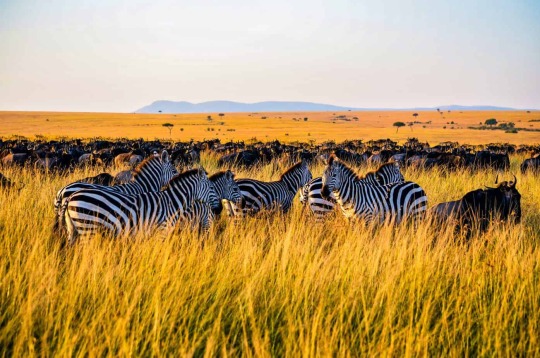
In conclusion, a Tanzania Wildebeest Migration Photographic Safari is not just a journey; it's a visual odyssey through one of the world's most remarkable natural spectacles. Whether opting for a budget-friendly camping experience or a specialized photographic safari, the Serengeti promises a once-in-a-lifetime adventure where the lens captures the essence of the wild, preserving the magic of the Great Migration for years to come.
#Northern Tanzania Budget Camping Safari#Serengeti Tanzania Photographic Safari#Tanzania Wildebeest Migration Photographic Safari
0 notes
Text
Northern Tanzania Safari | Wild Voyager
Embark on an extraordinary adventure with the Northern Tanzania Safari, meticulously curated by Wild Voyager to offer a captivating experience in one of Africa's most enchanting regions. Immerse yourself in the untamed beauty of this diverse land as you traverse through its sprawling landscapes, abundant wildlife sanctuaries, and hidden gems nestled within the Tanzanian wilderness. Witness nature at its most raw and awe-inspiring as you venture into iconic destinations like the Serengeti National Park, renowned for its phenomenal wildebeest migration that paints the grasslands with a mesmerizing tapestry of life. Traverse through Ngorongoro Crater, an ancient volcanic caldera teeming with astounding biodiversity where predators roam freely amidst a breathtaking backdrop. As you journey further north towards Tarangire National Park, be captivated by vast plains dotted with baobab trees and herds of elephants gracefully meandering through their natural habitat. Accompanied by expert guides well-versed in local knowledge and wildlife behavior, every moment spent on this safari will bring thrilling encounters and unforgettable memories etched forever in your heart.
0 notes
Note
Any teal/turquoise herps or birds? :3
I can think of a few for you...

Electric Blue Day Gecko (Lygodactylus williamsi), male, family Gekkonidae, endemic to the Kimboza Forest in Tanzania
CRITICALLY ENDANGERED
photograph by John Lyakurwa

Electric Blue Day Gecko (Lygodactylus williamsi), family Gekkonidae, endemic to the Kimboza Forest in Tanzania
ENDANGERED.
Photograph by Angi Wallace

Turquoise Cotinga (Cotinga ridgwayi), family Cotingidae, order Passeriformes, Costa Rica
photograph by Andrey Navarro Brenes

Spangled Cotinga (Cotinga cayana), male, family Cotingidae, order Passeriformes, found in northern South America
Photograph by Greg Hume

Lovely Cotinga (Cotinga amabilis), male, family Cotingidae, order Passeriformes, Honduras
photograph by James Adams

Plum-throated Cotinga (Cotinga maynana), males, family Cotingidae, order Passeriformes, Puta Mayo, Colombia
photographs by Brayan Coral
432 notes
·
View notes
Text
"More than three-quarters of UK universities have pledged to exclude fossil fuel companies from their investment portfolios, according to campaigners.
The move, which is part of a wider drive to limit investment in fossil fuels, follows years of campaigning by staff and students across the higher education sector.
The student campaign group People & Planet announced on Friday that 115 out of 149 UK universities had publicly committed to divest from fossil fuels – meaning £17.7bn-worth of endowments are now out of reach of the fossil fuel industry.
Laura Clayson, from People & Planet, said it would have been unthinkable a decade ago that so many institutions had formally refused to invest in fossil fuels.
“That we can celebrate this today is down to the generations of students and staff that have fought for justice in solidarity with impacted communities. The days of UK universities profiteering from investments in this neo-colonial industry are over.”
People & Planet set up the Fossil Free universities campaign in 2013. As part of its efforts the group has highlighted the “struggles and voices” of communities on the frontline of the climate crisis in an attempt to bring home the real-world impact of investment decisions made by UK universities.
Clayson said: “The demand for fossil-free came from frontline communities themselves and it is an act of solidarity from global north organisers campaigning on this … We have a responsibility to speak the lived experiences of the communities resisting these inequalities into megaphones at protests and in negotiations within university boardrooms, to highlight their stories of struggle in spaces so often detached from the reality of everyday life on the frontlines.”
One of the projects highlighted by the campaign is the proposed East African Crude Oil Pipeline (EACOP) – a mega project that would stretch almost 900 miles from the Lake Albert region of Uganda to the coast in Tanzania, and release vast amounts of planet-heating carbon.
The pipeline is being built in spite of local opposition, and there are reports that protesters and critics have been met with state violence. Hundreds of student organisers have been involved in the struggle.
Ntambazi Imuran Java, the lead coordinator at the Stop EACOP Uganda campaign, said its members appreciated the efforts of UK students to bring an end to universities’ fossil fuel investments.
“[This] supports those who have worked tirelessly to stop deadly extraction projects like EACOP … Regardless of the arrests and violations on the activists, students’ activists and communities, we continue to demand for the Uganda authorities to stop the project and instead invest in renewables.”
People & Planet said four UK institutions – Birmingham City University, Glasgow School of Art, Royal Northern College of Music and the University of Bradford – had recently incorporated fossil fuel exclusions into their ethical investment policies, meaning 115 out of 149 UK universities have publicly committed to divest from fossil fuels.
Later this month, the group will group will unveil its latest university league table that ranks institutions by their ethical and environmental performance. Campaigners say they will then increase pressure on the remaining 34 UK universities yet to go fossil-free."
-via The Guardian, December 2, 2024
#united kingdom#uk#europe#scotland#wales#northern ireland#universities#fossil fuels#climate action#carbon emissions#climate crisis#climate change#sustainability#hope posting#good news#hope#divestment#fossil fuel divestment
530 notes
·
View notes
Text


















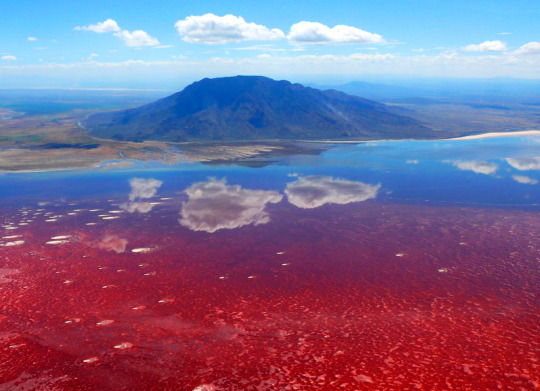

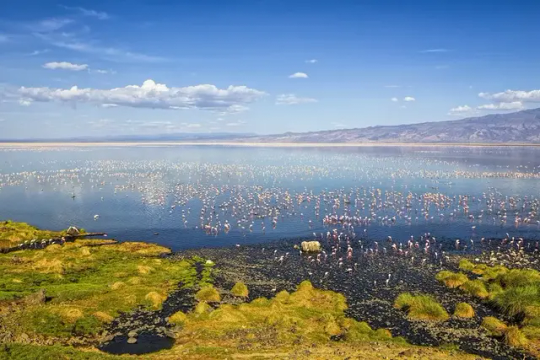
Озеро Натрон, превращающее животных в застывшие изваяния.
Озеро Натрон находится на севере Танзании, на границе с Кенией, недалеко от Национального парка Серенгети и заповедника Нгоронгоро. Озеро Натрон занимает площадь 56 км (35 миль) в длину и 24 км (15 миль) в ширину, но уровень воды меняется из-за испарения.
Вода из озера Натрон в Танзании буквально разъедает кожу, как только вы к ней прикоснетесь. Если хоть немного искупаться здесь - то кожа покроется волдырями и ожогами. Красивая корочка состоит из чрезвычайно агрессивного щелочного минерала с pH почти 12! Это почти в два раза выше здорового показателя для человека. И выше уровня аммиака, у которого pH всего 11. Мелкие животные, которые ненароком спускаются к воде, редко выживают даже после небольшого контакта с водой. Дождь, который идет в этих местах, называют призрачным. Потому что большая его часть испаряется, не долетев до поверхности.
Из озера Натрон вода не вытекает. В нее впадает одна река, а большую часть воды оно получает из родников и мелких ручейков. Однако вода просачивается через вулканическое вещество, где и обогащается щелочью. Озеро Натрон содержит очень много соли, соды и магнезита. Поверхность озера покрыта тонкой коркой соли. Вода здесь не всегда такая красная. Окрашивается она из-за деятельности микроорганизмов, которые прекрасно себя чувствуют в этой очень соленой воде. Явление это не постоянное. Происходит только когда вода испаряется и озеро становится максимально насыщенным щелочной солью - любимой средой здешних микроорганизмов.
У озера есть пресная и соленая части. Но будущая плотина может уничтожить соленую часть озера Здесь размножаются бактерии - им такой состав нипочем. Главная причина гибели здешних животных - именно бактерии, которые попадают в организм вместе с водой. Единственный представитель местной фауны, кто не боится этих бактерий - фламинго. Для фламинго это идеальное место. Они питаются местными водорослями, а "красная вода" является барьером для хищников. Поэтому на фламинго здесь почти никто не охотится.
Здесь умудряются выживать даже рыбы - к этой воде приспособилось два вида тиляпий. Вода в озере очень горячая - температура иногда поднимается до 50 ° C. Всему виной горячие источники. Однако у этого уникального природного объекта есть все шансы исчезнуть с лица земли. Власти здесь п��анируют построить гидроэлектростанцию и плотину. Соленая часть озера может исчезнуть, так как ее зальет пресной водой. Соленую воду же хотят использовать для добычи карбонат калия и перерабатывать ее в стиральный порошок. Опасность эти инициативы представляют для малых фламинго. Оказывается, 75% этих птиц появляются на свет именно на берегах этого озера.
Lake Natron, which turns animals into frozen sculptures.
Lake Natron is located in northern Tanzania, on the border with Kenya, near the Serengeti National Park and the Ngorongoro Conservation Area. Lake Natron is 56 km (35 mi) long and 24 km (15 mi) wide, but the water level changes due to evaporation.
The water from Lake Natron in Tanzania literally corrodes the skin as soon as you touch it. If you swim here even a little, your skin will be covered in blisters and burns. The beautiful crust consists of an extremely aggressive alkaline mineral with a pH of almost 12! This is almost twice as high as the healthy level for humans. And higher than the level of ammonia, which has a pH of only 11. Small animals that inadvertently go down to the water rarely survive even a short contact with the water. The rain that falls in these places is called ghost rain. Because most of it evaporates before it reaches the surface.
There is no water flowing out of Lake Natron. One river flows into it, and it gets most of its water from springs and small streams. However, the water seeps through volcanic matter, where it is enriched with alkali. Lake Natron contains a lot of salt, soda and magnesite. The surface of the lake is covered with a thin crust of salt. The water here is not always so red. It is colored due to the activity of microorganisms that feel great in this very salty water. This phenomenon is not constant. It only occurs when the water evaporates and the lake becomes maximally saturated with alkaline salt - the favorite environment of local microorganisms.
The lake has a fresh and salty part. But the future dam can destroy the salty part of the lake. Bacteria multiply here - they do not care about such a composition. The main reason for the death of local animals is the bacteria that enter the body along with the water. The only representative of the local fauna that is not afraid of these bacteria is the flamingo. This is an ideal place for flamingos. They feed on local algae, and the "red water" is a barrier for predators. Therefore, almost no one hunts flamingos here. Even fish manage to survive here - two species of tilapia have adapted to this water. The water in the lake is very hot - the temperature sometimes rises to 50 ° C. Hot springs are to blame. However, this unique natural object has every chance of disappearing from the face of the earth. The authorities are planning to build a hydroelectric power station and a dam here. The salty part of the lake may disappear, as it will be flooded with fresh water. They want to use the salt water to extract potassium carbonate and process it into washing powder. These initiatives pose a danger to lesser flamingos. It turns out that 75% of these birds are born on the shores of this lake.
Источник://t.me/places_on_earth, //www.travel.ru/wow/natron.html, /kulturologia.ru/blogs/231022/54558/, //www.kiwoitoafricasafaris. com/ru/Танзания-направления/озеро-Натрон/, /mail.kz/ru/ news/interesting/-faktov-ob-ochen-opasnom-ozere-natron-v-tanzanii, /dzen.ru/a/ ZEKreWvVMkhyndD7, /winter-borealis. livejournal.com/103782.html.
#Tanzania#nature#nature aesthetic#landscape photography#lake#Natron#red water#fossilized skeletons#salt#alkali#flamingo#sky#clouds#naturelovers#nature video#Танзания#озеро#Натрон#природа#Пейзаж#красная вода#соль#щелочь#окаменевшие скеле��ы#небо#облака#фламинго#природнаякрасота#видео
114 notes
·
View notes
Text
16 Days – Across Northern Circuits Safaris

This tour will take you to the most attractive and most sold destinations in the Northern Circuits in Tanzania, The Intends to offer you a full package of what we mean Tanzania Is the Best Destination in Africa. Combination wildlife tour, Walking safari, Village visit gives very unforgettable days to experience not only those but also the tour will extend to Natron, Serengeti, Tarangire, Ngorongoro Crater, encountering the sound of Tanzania at large, The world wildlife movement show-Great Wildebeest Migration and the Big five Will be part of your true Holiday memory.
Know more about - https://sumbiextramilessafari.com/16-days-across-northern-circuits-safaris
0 notes
Text
Dandelion News - November 22-28
Like these weekly compilations? Tip me at $kaybarr1735 or check out my Dandelion Doodles!
1. Los Angeles becomes a sanctuary city for LGBTQ+ youth and immigrants as officials reject Project 2025

“The Los Angeles City Council voted unanimously Tuesday to pass the “sanctuary city” ordinance, shielding queer youth who travel to the city to receive gender-affirming care from prosecution, as well as preventing city resources from being used in immigration enforcement[….]”
2. Huge deforested areas in the tropics could regenerate naturally, study finds

“Cleared or degraded tropical forests around the world covering a combined area larger than Saudi Arabia could regrow on its own, according to new research published Oct. 30 in the journal Nature. [… T]he permanence of regrown forests is critically important to the benefits it can provide to biodiversity and the climate.”
3. Minnesota tribe could soon get a solar-powered resilience hub

“A pair of developers are working to build a microgrid at an elementary school and community center on the White Earth Reservation in northern Minnesota [… which would] provide about 12 hours worth of backup power for residents to be able to charge cell phones, power medical equipment, or stay warm in the event of a power outage.”
4. An exchange between Indonesia and Tanzania supports food security and ocean health

“Around the world, WWF helps manage […] both traditional sustainability-oriented management and science-based practices. This combination supports long-term food security and biodiversity goals. […] Local ownership and management are […] key to achieving stable fisheries and social and economic benefits.”
5. Spiky blue devils and chocolate lilies: Victorian grassland bursts with wildflowers after ecological ‘reset’

“About 70 native plant species could be found within the site, including […] four endangered species of orchid. […] Careful management, including an ecological burn in May and weed control measures to reduce pasture grasses, laid the groundwork for wildflowers to thrive.”
6. Vast forests, wetlands and lakes conserved [in Ontario]

“A vast 970-hectare area featuring thriving forests, wetlands and crystal-clear lakes northeast of Sault Ste. Marie is now protected[….] The intact forests, lakes, wetlands and shorelines support high biodiversity and are home to many threatened species[….]”
7. A New Era of Compassion: How Suncoast Humane Society is Changing Animal Welfare for Good
“Our campus includes outdoor play areas, trails, and even a small swimming pool to encourage animals to stay active, explore, and simply be themselves.”
8. Building climate resilient cocoa farming in West Africa
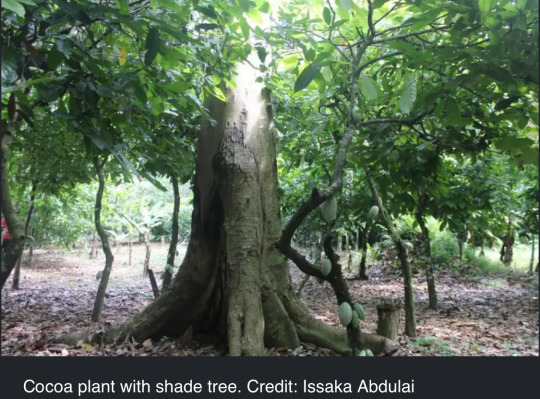
“[… A] promising new approach to improve climate resilience in cocoa agroforestry across West Africa […] focuses on the critical role of leaf "phenology"—the seasonal changes in leaf cycles—in trees providing shade in managing climate impacts. [… S]hade trees that lose their leaves entirely during the dry season proved especially beneficial in maintaining soil moisture[….]”
9. New Zealanders save more than 30 stranded whales by lifting them on sheets
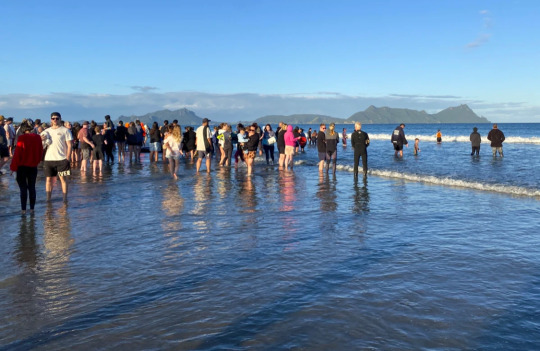
“[The Department of Conservation] praised as “incredible” the efforts made by hundreds of people to help save the foundering pod. “It’s amazing to witness the genuine care and compassion people have shown toward these magnificent animals[….]””
10. 'A really sobering moment:' English zoo fights extinction of freshwater Boxer pupfish

“Whipsnade Zoo aquarists were recently told by conservation partners that that the world's last remaining Boxer pupfish was in their care, prompting the zoo to carry out the immediate transport of all the "precious" Boxer pupfish eggs to another local conservation and education charity in the name of species preservation.”
November 15-21 news here | (all credit for images and written material can be found at the source linked; I don’t claim credit for anything but curating.)
#hopepunk#good news#los angeles#us politics#lgbt+#immigrants#deforestation#nature#minnesota#native american#indigenous#electricity#solar panels#solar energy#solar power#ocean#fishing#food insecurity#wildflowers#native wildflowers#native plants#conservation#canada#animal shelters#humane society#agroforestry#new zealand#whale#fish#endangered
126 notes
·
View notes
Text

Lake Natron is a salt lake in the Arusha Region of northern Tanzania, not far from the border with Kenya. It is shallow — less than 10 feet (3 m) deep — and varies in width depending on its water level. The color of Lake Natron is typical of saline lakes with high evaporation rates, in which salt-loving microorganisms thrive using photosynthesis to make their own food. A by-product of this photosynthesis causes deeper water to turn bright red and shallow parts of the lake to take on a rusty orange color.
-2.348486°, 35.731660°
Source imagery: Maxar
316 notes
·
View notes
Text
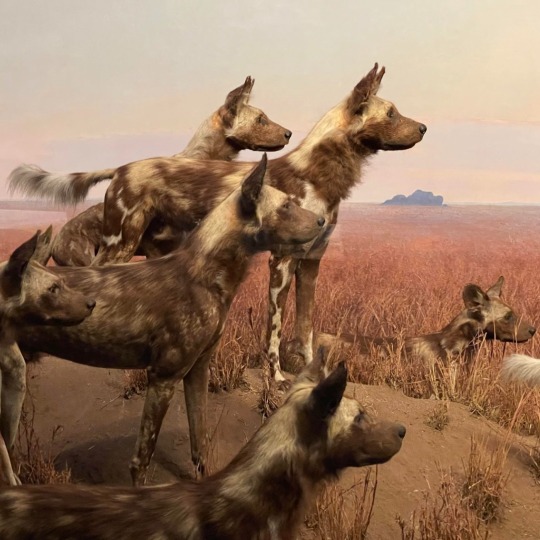
For today’s Exhibit of the Day, let’s check out the Hunting Dog Diorama! This scene, which takes place on the Serengeti Plain in northern Tanzania, depicts a group of these predatory dogs with their gaze fixed on a distant zebra. African hunting dogs (Lycaon pictus) are some of the continent’s most formidable predators: Thanks to their teamwork, these carnivores have a hunting success rate of more than 70 percent—far higher than that of lions or leopards.
As with all of the Museum’s habitat dioramas, this scene is a re-creation based on the meticulous observations of scientists in the field in the early twentieth century and the onsite sketches and photographs of the artists who accompanied them. You can see this diorama in the Museum’s Hall of African Mammals! Plan your visit.
Photo: © AMNH
#science#amnh#museum#nature#natural history#animals#did you know#fact of the day#animal kingdom#hunting dog#canids#wild dog#dioramas
365 notes
·
View notes
Text

The moment a leopard caught a stork.
Serengeti, Northern Tanzania.
Photo by Paul Rifkin
173 notes
·
View notes